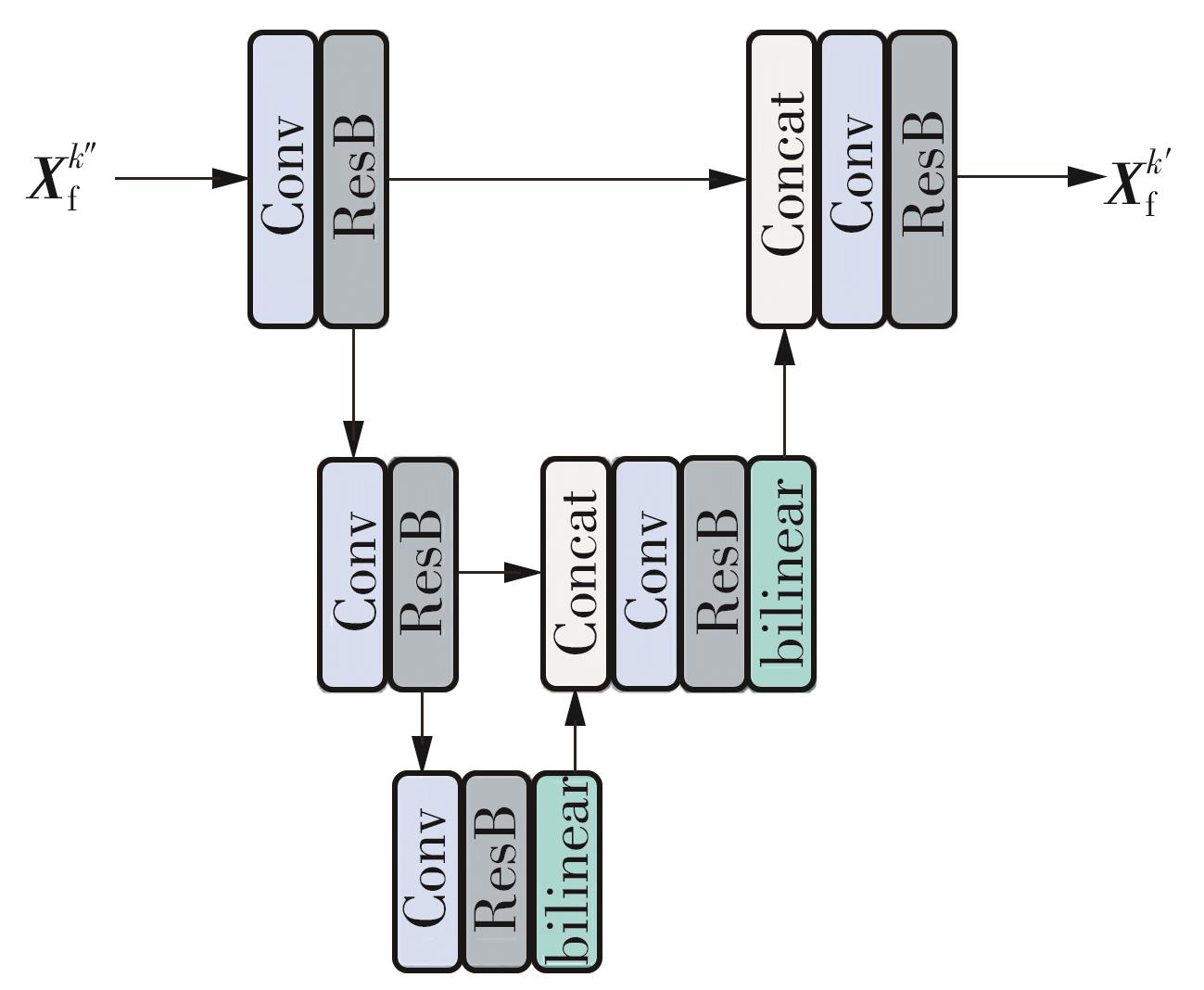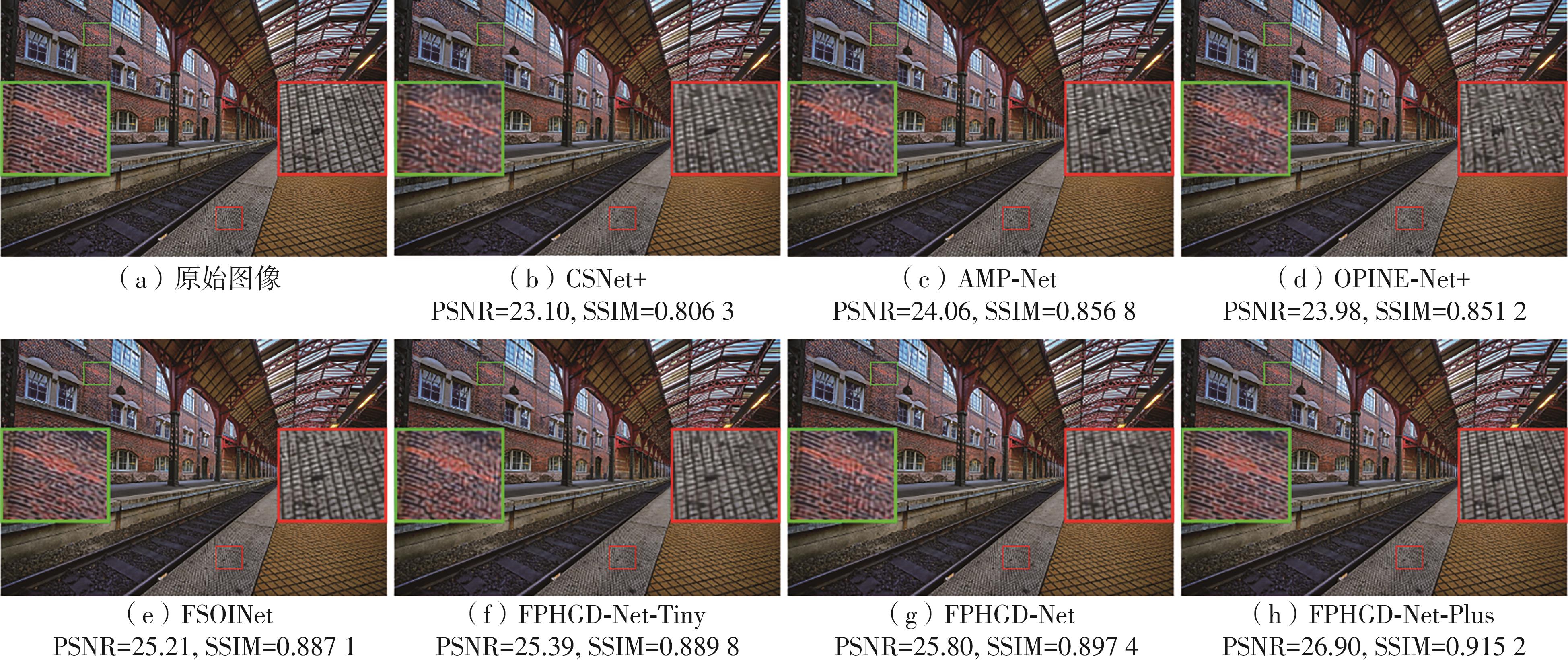| 1 |
DONOHO D L .Compressed sensing[J].IEEE Transactions on Information Theory,2006,52(4):1289-1306.
|
| 2 |
CHEN C, TRAMEL E W, FOWLER J E .Compresse-d-sensing recovery of images and video using multihypothesis predctions[C]∥Proceedings of 2011 Conference Record of the Forty Fifth Asilomar Conference on Signals,Systems and Computers (ASILOMAR).Pacific Grove:IEEE,2011:1193-1198.
|
| 3 |
ZHANG J, ZHAO D, GAO W .Group-based sparse r-epresentation for image restoration[J].IEEE Transacti-ons on Image Processing,2014,23(8):3336-3351.
|
| 4 |
KULKARNI K, LOHIT S, TURAGA P,et al .Reconnet:non-iterative reconstruction of images from compressively sensed measurements[C]∥Proceedings of the IEEE Conference on Computer Vision and Pattern Recognition.Las Vegas:IEEE,2016:449-458.
|
| 5 |
YAO H, DAI F, ZHANG S,et al .Dr2-net:deep residual reconstruction network for image compressive sensing[J].Neurocomputing,2019,359(9):483-493.
|
| 6 |
SHI W, JIANG F, LIU S,et al .Image compressed sensing using convolutional neural network[J].IEEE Transactions on Image Processing,2019,29:375-388.
|
| 7 |
CUI W, LIU S, JIANG F,et al .Image compressed sensing using non-local neural network[J].IEEE Transactions on Multimedia,2021,25:816-830.
|
| 8 |
TIAN J, YUAN W, TU Y .Image compressed sensing using multi-scale residual generative adversarial network[J].The Visual Computer,2022,38(12):4193-4202.
|
| 9 |
魏志超,杨春玲 .时域注意力特征对齐的视频压缩感知重构网络[J].电子学报,2022,50(11):2584-2592.
|
|
WEI Zhi-chao, YANG Chun-ling .Video compressed sensing reconstruction network based on temporal-attention feature alignment[J].Acta Electronica Sinica,2022,50(11):2584-2592.
|
| 10 |
ZHANG J, GHANEM B .ISTA-net:interpretable optimization-inspired deep network for image compressive sensing[C]∥Proceedings of the IEEE Conference on Computer Vision and Pattern Recognition.Saly Lake City:IEEE,2018:1828-1837.
|
| 11 |
ZHANG J, ZHAO C, GAO W .Optimization-inspired compact deep compressive sensing[J].IEEE Journal of Selected Topics in Signal Processing,2020,14(4):765-774.
|
| 12 |
YOU D, XIE J, ZHANG J .ISTA-Net++:flexible deep unfolding network for compressive sensing[C]∥Proceedings of the 2021 IEEE International Conference on Multimedia and Expo (ICME).Shenzhen:IEEE,2021:1-6.
|
| 13 |
YOU D, ZHANG J, XIE J,et al .Coast:controllable arbitrary-sampling network for compressive sensing[J].IEEE Transactions on Image Processing,2021,30:6066-6080.
|
| 14 |
YANG Y, SUN J, LI H,et al .ADMM-CSNet:a deep learning approach for image compressive sensing[J].IEEE Transactions on Pattern Analysis and Machine Intelligence,2018,42(3):521-538.
|
| 15 |
ZHANG Z, LIU Y, LIU J,et al .AMP-Net:denoising-based deep unfolding for compressive image sensing[J].IEEE Transactions on Image Processing,2021,30:1487-1500.
|
| 16 |
SONG J, CHEN B, ZHANG J .Memory-augmented deep unfolding network for compressive sensing[C]∥Proceedings of the 29th ACM International Conference on Multimedia.New York:ACM,2021:4249-4258.
|
| 17 |
CHEN W, YANG C, YANG X .FSOINET:feature-space optimization-inspired network for image compressive sensing[C]∥Proceedings of the 2022 IEEE International Conference on Acoustics,Speech and Signal Processing (ICASSP).Singapore:IEEE,2022:2460-2464.
|
| 18 |
陈文俊,杨春玲 .图像压缩感知的特征域优化及自注意力增强神经网络重构算法[J].电子学报,2022,50(11):2629-2637.
|
|
CHEN Wen-jun, YANG Chun-ling .Feature-space optimization-inspired and self-attention enhanced neural network reconstruction algorithm for image compressive sensing[J].Acta Electronica Sinica,2022,50(11):2629-2637.
|
| 19 |
MOU C, WANG Q, ZHANG J .Deep generalized unfolding networks for image restoration[C]∥Proceedings of the IEEE/CVF Conference on Computer Vision and Pattern Recognition.New Orleans:IEEE,2022:17399-17410.
|
| 20 |
CUI W, LIU S, ZHAO D .Fast hierarchical deep unfolding network for image compressed sensing[C]∥Proceedings of the 30th ACM International Conference on Multimedia.New York:ACM,2022:2739-2748.
|
| 21 |
SONG J, MOU C, WANG S,et al .Optimization-inspired cross-attention transformer for compressive sensing[C]∥Proceedings of the IEEE/CVF Conference on Computer Vision and Pattern Recognition.Vancouver:IEEE,2023:6174-6184.
|
| 22 |
LIAN Q, SU Y, SHI B,et al .LG-Net:local and global complementary priors induced multi-stage progressive network for compressed sensing[J].Signal Processing,2023,202:108737/1-13.
|
| 23 |
ZHANG H, YANG C .Dual-domain update and double-group optimization network for image compressive sensing[C]∥Proceedings of 2022 IEEE International Conference on Image Processing (ICIP).Bordeaux:IEEE,2022:1286-1290.
|
| 24 |
PARIKH N, BOYD S .Proximal algorithms[J].Foundations and Trends® in Optimization,2014,1(3):127-239.
|
| 25 |
SHEN M, GAN H, NING C,et al .TransCS:a transformer-based hybrid architecture for image compressedsensing[J].IEEE Transactions on Image Processing,2022,31:6991-7005.
|
| 26 |
SONG J, CHEN B, ZHANG J .Dynamic path-controllable deep unfolding network for compressive sensing[J].IEEE Transactions on Image Processing,2023,32:2202-2214.
|
| 27 |
ZHOU Z, LIU F, SHEN H .IEF-CSNET:information enhancement and fusion network for compressed sensing reconstruction[J].Sensors,2023,23(4):1886-2002.
|
| 28 |
BREIMAN L .Bagging predictors[J].Machine Learning,1996,24(2):123-140.
|
| 29 |
FOWLER J E,MUN S, TRAMEL E W .Block-based compressed sensing of images and video[J].Foundations and Trends® in Signal Processing,2012,4(4):297-416.
|
| 30 |
MARDANI M, SUN Q, DONOHO D,et al .Neural proximal gradient descent for compressive imaging[C]∥Proceedings of Advances in Neural Information Processing Systems.Montreal:NeurIPS,2018:9596-9606.
|
| 31 |
MARTIN D, FOWLKES C,TAL D,et al .A database of human segmented natural images and its application to evaluating segmentation algorithms and measuring ecological statistics[C]∥Proceedings of the Eighth IEEE International Conference on Computer Vision.Vancouver:IEEE,2001:416-423.
|
| 32 |
AGUSTSSON E, TIMOFTE R .Ntire 2017 challenge on single image super-resolution:dataset and study[C]∥Proceedings of the IEEE Conference on Computer Vision and Pattern Recognition Workshops.Honolulu:IEEE,2017:126-135.
|
| 33 |
HUANG J B, SINGH A, AHUJA N .Single image superresolution from transformed self-exemplars[C]∥Proceedings of the IEEE Conference on Computer Visionand Pattern Recognition.Boston:IEEE,2015:5197-5206.
|
| 34 |
LOSHCHILOV I, HUTTER F .Decoupled weight decay regularization[C]∥Proceedings of the 7th International Conference on Learning Representations (ICLR).New Orleans:[s.n.],2019.
|











